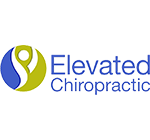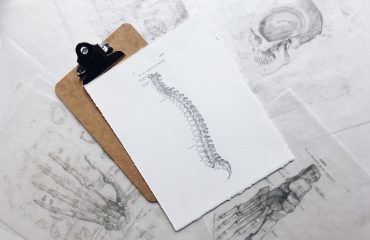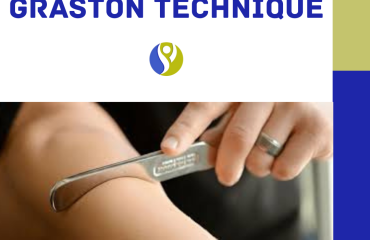You’ve heard about infrared technology before, probably in relation to those sleek, glowing heating pads or fancy saunas. Infrared is becoming very trendy in the beauty industry. But what exactly is infrared, and why is it suddenly showing up in everything from recovery tools to skincare? Let’ break it down.
What is Infrared, really?!
Infrared (IR) is a type of light wave that’s not visible to the human eye. The nerdy part of me loves that infrared is part of the electromagnetic spectrum, just like visible light, but infrared lives beyond the red end of the visible spectrum. Think of it as Robin Hood trying to keep a low profile. While you can’t see infrared light, you can feel it as heat. Imagine that warm sensation you get when you step outside on a sunny day. That’s infrared energy doing its thing!
Here’s the magical part: infrared energy penetrates deeper into your skin than regular heat, reaching your muscles, joints, and tissues. This means you don’t have to sit under the infrared light for long periods of time. Infrared is like a mini massage from the inside out. No wonder it’s quickly becoming a go-to recovery tool for athletes, fitness buffs, and anyone who’s ever had sore muscles.
The Benefits of Infrared: It’s Not Just About Feeling Warm
Infrared therapy, also known as infrared saunas or infrared light therapy, isn’t just about basking in heat—it’s about providing a whole host of benefits to your body. Let’s dig into the science behind the glow:
- Promotes Circulation
- Infrared light increases blood flow, meaning more oxygen and nutrients are delivered to your muscles and tissues. This is like sending your body a fresh supply of high-quality fuel for recovery. Better circulation also helps flush out toxins, and who doesn’t love a good detox.
- Reduces Muscle and Joint Pain
- One of infrared’s most celebrated abilities is its capacity to help reduce inflammation. Whether you’re recovering from a tough workout or dealing with the effects of an old injury, infrared light can target areas that need it most. Infrared doesn’t just mask the pain like some topical creams; it helps to heal the body from the inside out.
- Helps Relaxation
- After a day filled with stress, tension, or heavy lifting, infrared can provide a soothing and calming effect. By penetrating deep into your tissues, it encourages muscle relaxation, so you can feel less stiff and more Zen. A little infrared warmth can be like a mini spa session for your entire body!
- Boosts Skin Health
- Did you know infrared can improve your skin? By increasing circulation and stimulating collagen production, it can give your complexion a youthful glow and help repair damaged skin. This is why all the beauty influencers are obsessed with infrared masks! Goodbye, acne scars and fine lines—hello, smooth, radiant skin!
- Speeds Up Recovery
- Whether you’re training for a marathon or just trying to keep your body in tip-top shape, recovery is key. Infrared light helps accelerate tissue repair and decreases muscle soreness, making it a valuable tool for faster recovery after an intense workout.
Infrared for Body Recovery: The Secret Sauce
Now that you’re all hyped about the benefits, let’s talk about how infrared can help with body recovery specifically.
When you engage in physical activity, your muscles go through microtears, and your body responds with inflammation. It’s this inflammation that can lead to soreness. Infrared light helps reduce this inflammation by promoting the circulation of blood, which in turn helps your muscles heal faster. And guess what? The infrared heat also penetrates your tissues, delivering that much-needed healing energy directly where you need it most.
Whether you’re using an infrared sauna, a handheld infrared light device, or a heated infrared pad, you’re giving your muscles a little extra TLC. It’s like having a warm hug for your sore body—but with a little bit of science behind it.
How to Use Infrared for Recovery
So, how can you incorporate infrared into your recovery routine? It’s simpler than you think.
- Infrared Sauna: If you have access to an infrared sauna, you’re in for a treat. Spend around 15–30 minutes in the sauna to allow the infrared light to penetrate your body and soothe your muscles. It’s also great for detoxing and improving circulation.
- Infrared Light Therapy Devices: These handheld devices are like your personal recovery buddy. Point them at sore spots on your body (think knees, shoulders, or back), and let the infrared light work its magic for about 10–20 minutes per area. It’s portable, effective, and easy to use.
- Infrared Heating Pads: If you’re looking for something a little less high-tech, a good old infrared heating pad might do the trick. Simply place it over the affected area and relax while the heat helps your muscles recover.
When NOT to use Infrared Therapy
While infrared therapy has many benefits, it’s not for everyone or every condition. There are certain contraindications to be aware of before using infrared for recovery, especially if you have specific health concerns. Let’s go over a few of the main ones:
- Pregnancy
- Pregnant women should avoid infrared therapy, especially the use of infrared saunas or devices that apply direct heat to the body. The elevated body temperature can potentially harm the developing fetus, so it’s better to err on the side of caution and skip infrared treatments during pregnancy.
- Acute Inflammation or Infection
- Infrared light therapy may worsen conditions involving acute inflammation or active infection. It can increase blood circulation, which might spread infections or exacerbate inflammation in conditions like cellulitis or other inflammatory diseases. If you’re dealing with an acute injury, infection, or swelling, consult a doctor before using infrared therapy.
- Certain Heart Conditions
- If you have serious heart conditions, particularly those involving poor circulation (such as coronary artery disease), the use of infrared saunas or heat therapy should be discussed with a healthcare professional. The increased blood flow caused by infrared therapy might strain the heart in those with certain heart conditions.
- Fever
- If you have a fever or are dealing with an illness that involves a high body temperature, infrared therapy can worsen your symptoms. The heat can cause your body temperature to rise further, which may lead to dehydration, increased stress on your body, or make your fever worse.
- Blood Pressure Concerns
- Those with extremely low or high blood pressure should be cautious with infrared therapy. The increased circulation from infrared exposure can alter blood pressure, which might pose a risk for individuals who have uncontrolled blood pressure issues. If you have hypertension or hypotension, it’s important to consult a doctor before using infrared treatments.
- Skin Conditions
- Some skin conditions, like eczema or psoriasis, can potentially flare up with the heat from infrared therapy, although many people with such conditions use it with positive results. However, if you have a severe skin condition or open wounds, it’s best to avoid infrared until the skin heals.
- Sensitivity to Heat
- If you have a condition that causes an extreme sensitivity to heat, such as multiple sclerosis (MS), you may find infrared therapy uncomfortable or even harmful. For people with MS, for example, heat can sometimes exacerbate symptoms like fatigue or weakness. Always consult a healthcare professional before using infrared if you’re sensitive to heat.
- Medications that Increase Sensitivity to Heat
- Certain medications can make you more sensitive to heat. Medications such as antibiotics (especially tetracycline), diuretics, and those used to treat acne or other skin conditions can cause your skin to react poorly to heat. If you’re on any medications that could increase sensitivity to heat, you should avoid infrared therapy or consult a doctor first.
- Recent Surgery
- After undergoing surgery, it’s important to give your body time to heal. Infrared therapy might promote circulation and increase blood flow to the area, but this can sometimes increase swelling or interfere with the healing process. Always get clearance from your doctor before using infrared post-surgery.
Final Thoughts: Warm Up to Infrared Therapy
Infrared technology may seem like the latest wellness buzzword, but the benefits it offers for recovery are anything but fleeting. By improving circulation, reducing pain, and speeding up tissue repair, infrared therapy is like a personal recovery coach—minus the tough love.
While infrared therapy is generally safe for most people, it’s not without its precautions. If you fall into any of these categories, it’s crucial to talk to your healthcare provider before trying infrared treatments for recovery. As with any therapy, individual circumstances vary, and what works for one person might not be suitable for another.
So, the next time you’re feeling sore or stressed, consider giving infrared a try. Your muscles, skin, and overall well-being will thank you for it. The warm glow of infrared is waiting to help you feel your best, inside and out. Your health and safety come first— be sure to discuss infrared therapy with your healthcare provider to be sure infrared therapy is right for you!
Now that’s what we call warming up to the future of recovery. 🌟




